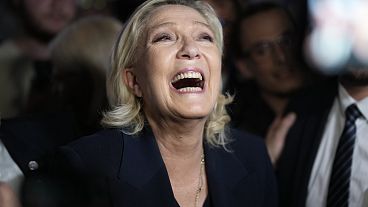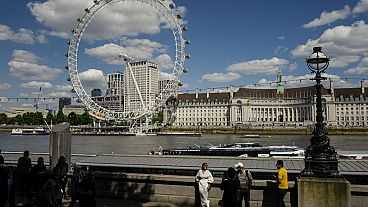The latest ECB monetary policy accounts reveal officials made a judgement call to cut rates, fearing that waiting too long for inflation confirmation would increase the risk of undershooting the 2% target.
The European Central Bank (ECB) has stated that its decision to cut interest rates in June was prompted by concerns that waiting too long for confirmation that inflation was moving towards 2% would have posed "a significant risk" of falling short of the target.
In the monetary policy accounts of the 5-6 June meeting released Thursday, ECB officials indicated they made a "judgement call" in lowering rates, despite the overall data being less conclusive than desired. This move signals Frankfurt's shift towards a less restrictive monetary policy stance.
This move signals Frankfurt's shift towards a less restrictive monetary policy stance.
According to the accounts, the level of policy restrictiveness required to reduce inflation from 2.6% to 2% was "likely to be lower" than what has been in place since September 2023. This indicates that the ECB believes inflation can achieve the final reduction to 2% even with lower interest rates.
The June rate cut provided "greater protection against downside shocks" compared to maintaining current levels, officials said.
The ECB noted that policy rates would remain restrictive even after a 25 basis point cut, suggesting that further reductions might follow.
Additionally, financing costs are considered restrictive, and real interest rates are seen as peaking for this cycle.
The majority of ECB officials expressed greater confidence that inflation would fall towards the 2% target by the second half of 2025 and then remain stable at that level.
Specifically, inflation is projected by staff to decrease from 5.4% in 2023 to an average of 2.5% in 2024, and to align with the target in the latter half of 2025.
Diverging views among ECB members
However, the ECB accounts reveal some differing opinions within the board, with more hawkish members pointing to increased uncertainty in the outlook.
Reflecting higher energy and non-energy commodity prices and recent upward surprises in services inflation, "this disinflation was somewhat slower in the updated projections".
Some members felt that the available data since the last meeting did not boost their confidence that inflation would reach 2%.
These members also voiced concerns about cutting rates, viewing risks to the inflation outlook as skewed to the upside due to ongoing economic recovery and heightened geopolitical risks.
Furthermore, they argued that a small undershoot in inflation would be "much less" costly than continued overshooting. They added that reducing interest rates was not entirely consistent with a data-dependent approach.
Yet, despite these reservations, there was a willingness to support the ECB's chief economist Philip Lane's proposal.
A dissenting member voted against the rate cut, citing persistent inflation, potential further shocks from geopolitical risks, and the risk that diverging from US interest rates could exacerbate inflation through exchange rate effects.
Future policy approach still data-dependent
Regarding future meetings, members stressed their commitment to ensuring that inflation sustainably returns to the 2% medium-term target promptly. They affirmed their intention to keep policy rates sufficiently restrictive for as long as necessary to achieve this goal.
They emphasised the importance of a data-dependent, meeting-by-meeting approach to determine the appropriate level and duration of restriction without pre-commitment to a specific rate path.















